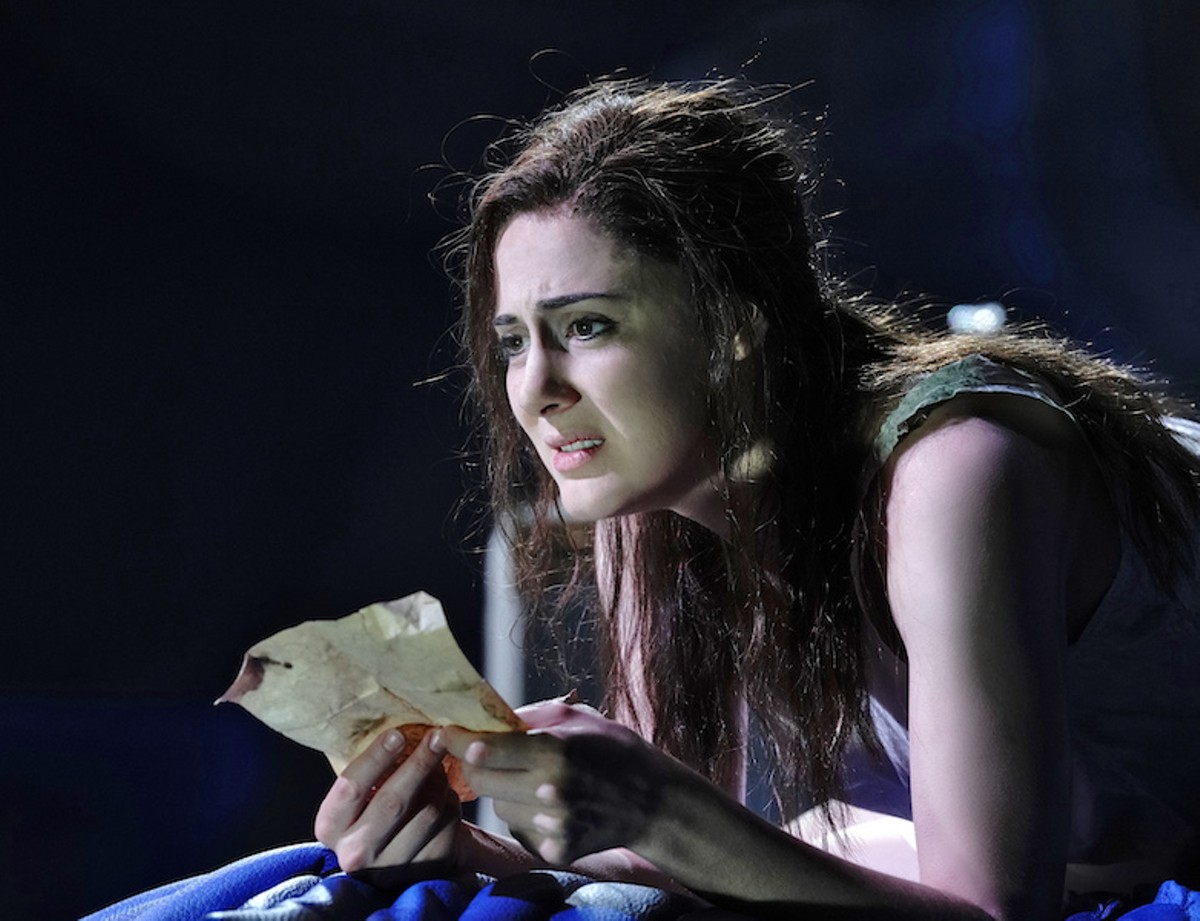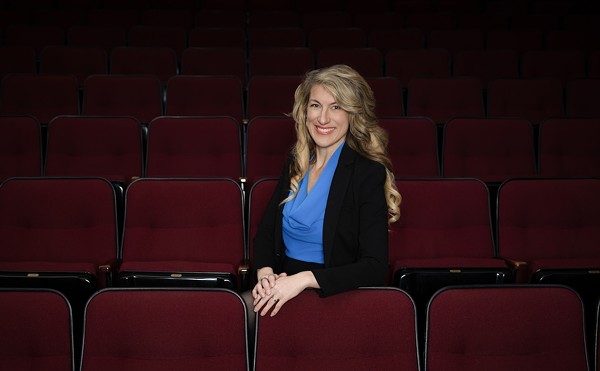You already know La Traviata. You may not realize this going in — you may think you’re not up to speed on opera, much less nineteenth century opera. But as you settle into the glorious production of La Traviata now being performed by Opera Theatre St. Louis, you’ll realize you’re wrong.
You definitely know the rousing song the guests sing at the opening party (“Libiamo ne'lieti calici,” or as we say in English, “Let’s get wasted”). You likely remember the heroine’s passionate “Amani Alfredo” from the end of Pretty Woman. And you certainly know the plot, if not its particulars. A courtesan falls in love, but is persuaded to give up her beloved by his disapproving father. Then she dies of consumption. No spoilers here; the story’s been told, and retold, since first being published in the novel La Dame aux Camélias in 1848.
In truth, the plot isn’t much. Our main characters fall in love instantly and passionately; in the next act, our heroine, Violetta, is persuaded to give up everything, without much in the way of motivation other than that she apparently really does have a heart of gold to the point of making terrible financial choices. Our hero, unaware of her selflessness, reacts badly. The tension explored at the end of the first act — should one choose the thrill of the party or the embrace of true love — is never really revisited. Choices are made; the plot keeps moving.
But the reason La Traviata has been a cultural touchstone for several hundred years isn’t that the librettist added much insight to original source material. It is, instead, all Verdi. The music resonates, a series of expertly interwoven high points that could each star in its very own luxury car commercial. And here it is so achingly beautiful, you’ll be wiping a tear from your eye long before Violetta ascends to her reward. Actually, make that tears.
For this, blame Sydney Mancasola, a young soprano who previously played the maid at Opera Theatre St. Louis’ excellent La rondine, and with this performance emerges as a full-blown star. Her voice is so pure and so powerful it could persuade angels to switch sides. But she doesn’t rest on vocal technique. She absolutely inhabits the part, making a completely convincing Violetta. Even when the libretto doesn’t really give much explanation for Violetta’s various changes of heart, this talented performer pulls you along. And in the end, you’ll truly believe she’s dying, with a finale that’s one of the most effective on-stage deaths you’ll ever witness. It’s a marvelous trick, being able to convincingly portray terrible weakness even while your voice remains strong. Mancasola pulls it off.

But it’s not just the three leads who deliver in this production. Patricia Racette, who makes her debut as a director, is an opera star who herself played Violetta at the Met, and her affinity for the material is clear. Take the party scenes. This is the rare play where the revelers genuinely seem to be having a blast — and not just in that fake-laughter way so often seen on stage. This crew gives every appearance of being giddily naughty, a little taste of the demi-monde. (Perhaps one reason you’ll question why Violetta would give up being a courtesan for a life in the country: Her Paris friends seem so fun!)
Credit goes both to the great supporting cast and to costume designer Kaye Voyce. Setting the action in the 1930s was an inspired choice, and Voyce runs with it. The sets by Laura Jellinek may be deceptively simple, with their giant camellia evoking Georgia O’Keefe, but Voyce’s clothes provide the spot-on details that set the mood for each scene.
It’s a grand production, to the point that at the performance I attended, audience members shouted “bravo!” after numerous high points — something unusual even for St. Louis’ famously enthusiastic audiences. Swept along by Verdi’s music, blown away by the performances, you may want to join in. It’s a stunning directorial debut. We should all hope to see more from Patricia Racette — and her talented Violetta, too.







